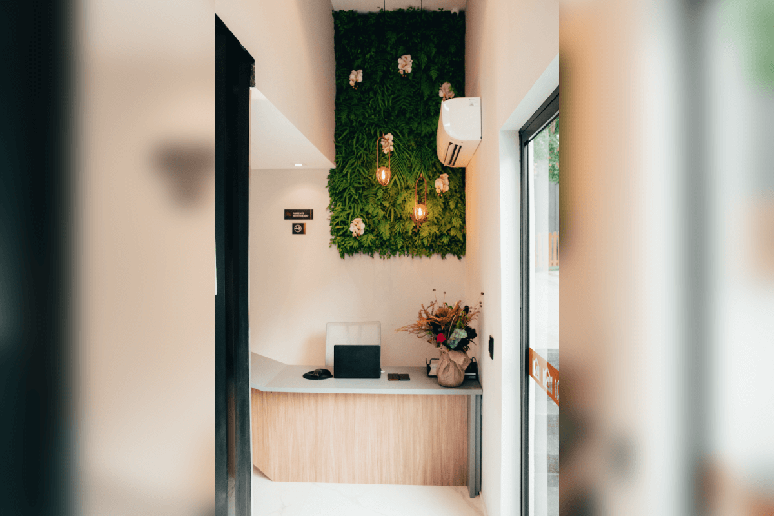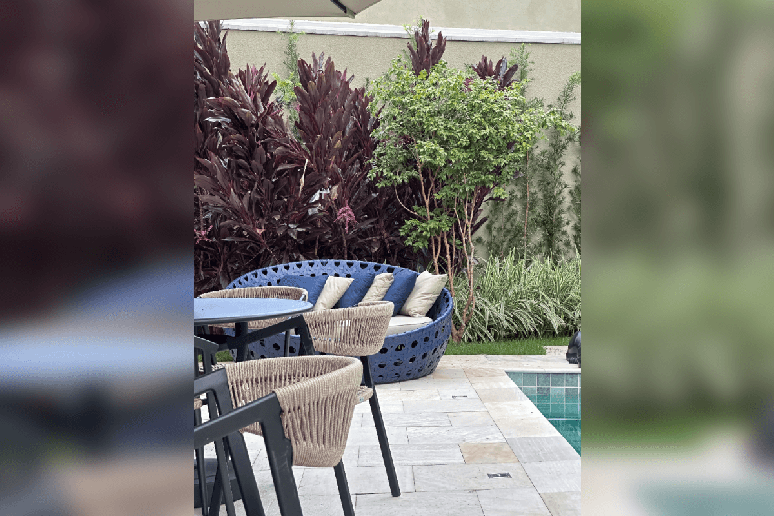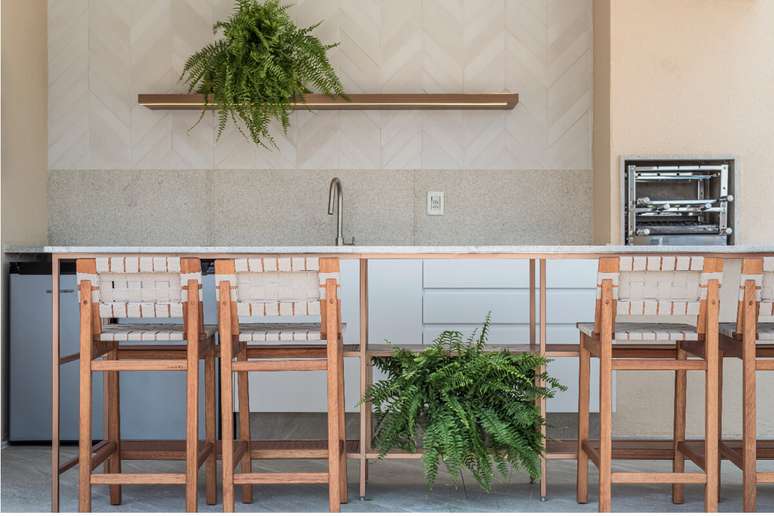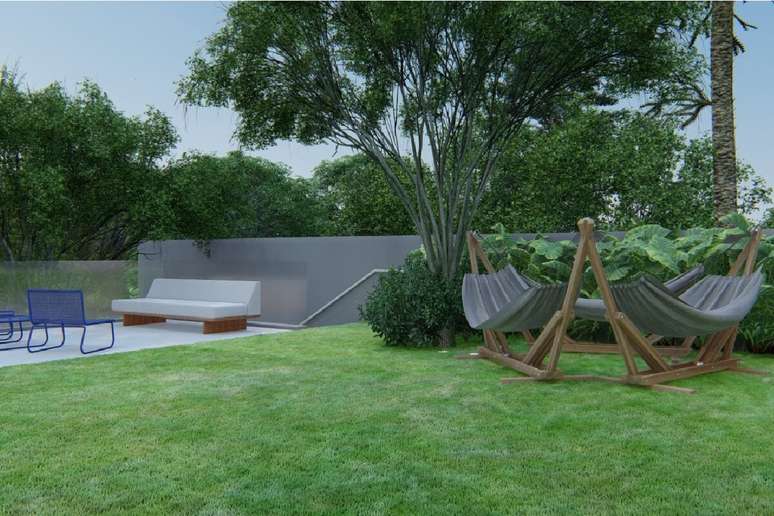It is possible to create spaces that connect the benefits of nature to physical and emotional health
Interior design has never gone so far beyond aesthetics. Today, concepts such as biophilia and neuroarchitecture are changing the way we see spaces. More than just beautiful, environments today must be functional, welcoming and, above all, connected to nature and our emotions. It’s a new era in design, where every detail counts to create harmony between mind, body and environment.
“When we combine biophilia and neuroarchitecture, emerging fields that are revolutionizing architectural design, we create environments that connect the benefits of nature to physical and emotional health. This way we can visualize and experience projects in a different way, based on neuroscientific principles,” explains architect Mariana Meneghisso, one of the partners of Meneghisso & Pasquotto Arquitetura.
The concept of biophilia
To better understand Mariana Meneghisso she starts from the concept of biophilia, derived from the Greek “love of life”, which suggests that human beings have an innate connection with life. nature. “In other words, each of us has an individual connection to the environment,” he continues. One of the main concepts of the field is the incorporation of natural elements into built environments, this can include the use of plants, water, natural light, organic materials, organic forms which relate to natural designs and visions of nature.
“Among the fundamental premises of biophilia we cannot fail to highlight that true biophilia is directly associated with responsibility in the use of materials”, says Mariana Meneghisso, who also recalls the replication of shapes, reliefs and natural elements in the design and aesthetics of the projects. “Having printed these lines and expressions of nature, without necessarily having a plant in the house, is a rich and essential aspect of biophilia,” he adds.
Neuroarchitecture concept
Neuroarchitecture seeks to understand how spaces influence our emotions and behaviors. “We have proven studies from around the world that reveal how environments Well-designed can stimulate creativity, concentration or relaxation,” emphasizes Mariana Meneghisso. “Elements such as high ceilings, the choice of color palette and the use of textures can help create a balance between functionality and comfort,” she adds Alexandre Pasquotto.
When connected, the fields work together, combining the human instinct to connect with nature with scientific studies that explore the impact of spaces on the brain and emotions. This union is also supported by scientific studies: in 2022, research from the University of São Paulo (USP) studied the impacts of green spaces in urban areas on the psychological well-being of residents and concluded that the presence of forested areas positively reduces the stress levels and improves quality of life.
Neuroarchitecture also explores how disposition The spaces, geometry, and even sounds of an environment designed for biophilia can stimulate specific areas of the brain, encouraging creativity in an office, relaxation in a living room, or concentration in a reading space.
“Together, these concepts offer a holistic approach to design, creating environments that not only meet functional needs, but also nurture people’s emotional and physical connection with the space they inhabit,” says architect Mariana Meneghisso, neuroarchitecture specialist at Meneghisso & Pasquotto Arquitetura.

Natural elements in interior design
Without just talking about plants in decoration, the inclusion of other natural elements in interior design now includes creative solutions that transform environments into spaces of connection with nature. One of these solutions is the vertical garden, which allows you to incorporate vegetation even in small spaces.
Installed in wallsthey become the focal point of the room, as well as helping to purify the air and improve acoustics. “Another option is the winter garden, an internal space dedicated exclusively to vegetation, which can include water fountains and natural stones, creating an oasis of tranquility inside the house,” adds Alexandre Pasquotto.
Organic materials are also fundamental in this typology project. Natural fabrics, such as linen, cotton, jute and bamboo, offer a touch of lightness and comfort to spaces. They can be on curtains, upholstery and carpets, adding a handcrafted and sustainable appeal. Additionally, the use of reforested wood in the furniture and finishes lends sophistication to the design, while reinforcing the commitment to environmentally responsible practices.

Open concepts
Open concepts are another way to integrate nature into interiors. By eliminating physical barriers between rooms, these spaces allow for better entry of natural light and greater cross ventilation. The presence of large windows or skylights enhances natural lighting, connecting the interiors to the rhythm of the day and reducing the need for artificial lighting. Additionally, using natural stone, such as marble, granite or quartzite, on countertops, floors or walls adds organic texture and durability, balancing functionality and beauty.
The presence of water in elements such as decorative fountains or reflecting pools not only aesthetically enriches the environment, but also promotes relaxation and helps regulate humidity. Finally, the use of rustic materials, such as straw and wicker, in furniture or decorative elements, strengthens the connection with nature, providing a welcoming and rustic aesthetic.

Plants for every environment
Now, for those who intend to adopt the seedlings in the environmentstake a look at some suggestions from Meneghisso & Pasquotto Arquitetura:
- Room: a sword of St. George, in addition to keeping evil away, can represent courage and be welcoming to welcome people when they enter and exit the residence;
- Be or life: Species such as ficus lyrata, Adam’s rib and zamioculcas create a focal point and require little maintenance. Ferns and arrowroots are also great options for bringing movement and texture to the environment;
- Room: lavender and jasmine are flowers known for their calming effects and can improve sleep quality, purify the air and maintain a relaxing environment;
- Kitchen: mint, rosemary, basil and chives are functional and perfume the environment. “You can grow a small vegetable garden in pots, damp gutters or planters to always have a spice at hand”, adds Mariana Meneghisso;
- Home office: succulents, cacti, phytonias and peperomias are easy to maintain and ideal for reducing stress. The inclusion of bonsai trees also brings a sophisticated touch to the work environment;
- Balcony: For outdoor spaces, opt for species such as spring jasmine, climbing jasmine and lavender, which add scent and color. On covered balconies you can use anthuriums, pacovás and philodendrons to create a small tropical garden.
But architect Mariana Meneghisso warns: each plant requires care, such as irrigation, ventilation, lighting and pruning, depending on each species. “The frequency of watering depends on the climate and the type of plant, some require always moist soil, while others require less water. Furthermore, it is necessary to place the plants in places with the right amount of sun or shade. Regular pruning helps to maintain its shape and stimulate healthy growth”, underlines the architect.
Technology also plays a role in neuroarchitecture and biophilia. control systems lightingsound and temperature can be adjusted to create environments that respond to residents’ comfort.
By Danilo Costa
Source: Terra
Ben Stock is a lifestyle journalist and author at Gossipify. He writes about topics such as health, wellness, travel, food and home decor. He provides practical advice and inspiration to improve well-being, keeps readers up to date with latest lifestyle news and trends, known for his engaging writing style, in-depth analysis and unique perspectives.








